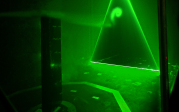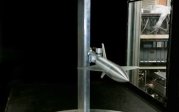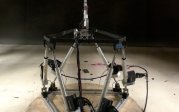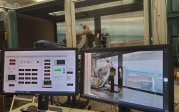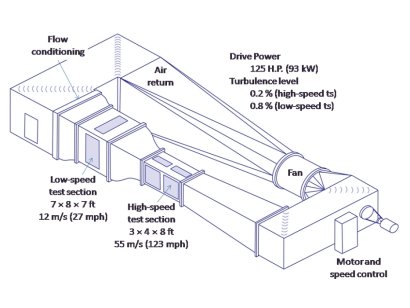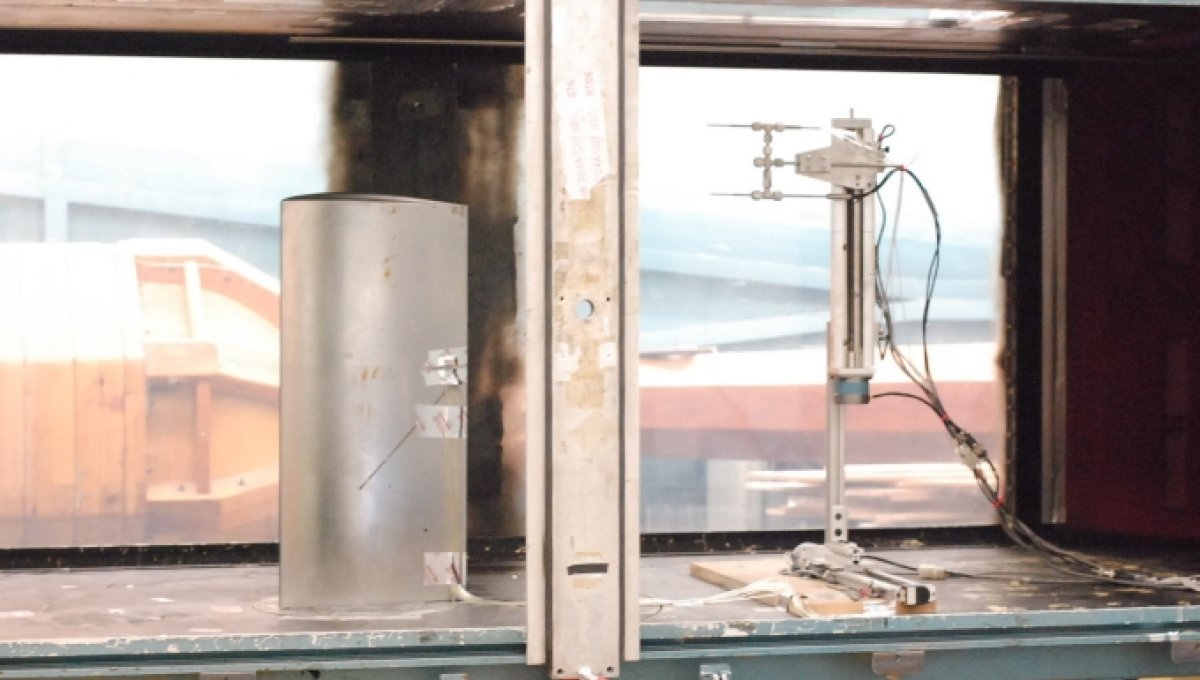
Wing and Probe Assembly in High-Speed Section
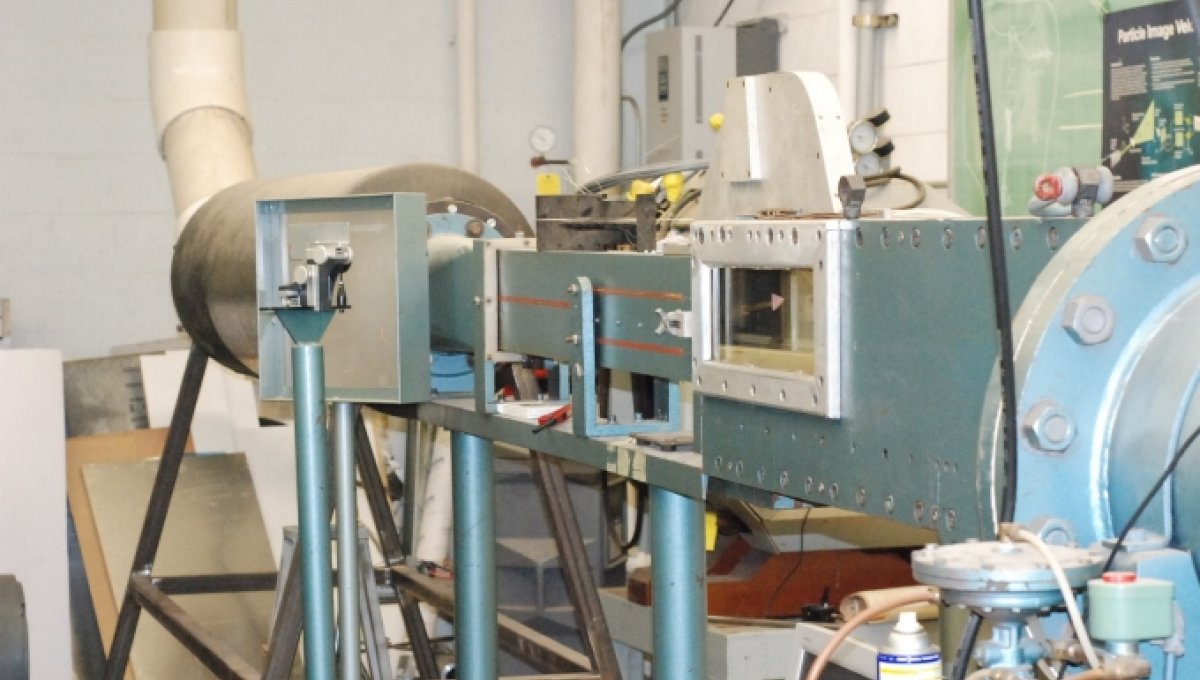
Supersonic wind tunnel

Laser Sheet Wingtip Vortex Flow Visualization (MAE 406 class lab)

Check Standard Model Testing

Dynamic Quadrotor Test

Setting Up Tilt-Rotor Test in High-Speed Test Section
Wing and Probe Assembly in High-Speed Section
Supersonic wind tunnel
Laser Sheet Wingtip Vortex Flow Visualization (MAE 406 class lab)
Check Standard Model Testing
Dynamic Quadrotor Test
Setting Up Tilt-Rotor Test in High-Speed Test Section
The Wind Tunnel Laboratory houses three different wind tunnels. The most commonly used one being the Closed-Circuit Low-Speed Wind Tunnel. There is also an Open-Circuit Low-Speed Tunnel with 6" Test Section. Finally, the laboratory houses a Supersonic Wind Tunnel. This page concentrates on the Closed-Circuit Low-Speed Wind Tunnel.
(Supplied by AeroLab LLC, Laural, MD c. 1971)
Used for undergraduate and graduate instruction and research in;
-
Aerodynamic, aeronautical, automotive, and architectural fields
-
Measurement techniques
-
125 H.P. motor (variable frequency AC Drive)
-
Computer Control and Data Acquisition
-
3 by 4 feet, 8 feet long, 55 m/s (123 mph)
-
Turntable and pitch mechanism (2DOF)
-
7 by 8 feet, 7 feet long, 12 m/s (26 mph)
-
Computer-controlled 3-axis traverse
-
Dynamic stability characteristics of quadrotor (E. Baris)
-
Aerodynamic characterization of low-fineness ratio cylinders (F. Miller)
-
Design of experiments enhanced statistical process control for wind tunnel check standard testing (B. Phillips)
-
Wind tunnel test techniques for low-reynolds number propeller performance enhancement (D. Burnette, E. Konuk, E. Baris)
-
Ship airwake/rotor interaction study (S. Doane, Y. Nacakli, B. Gonzalez)
-
Road vehicle ground wake study (J. Chen)
-
Transport aircraft wake study (B. Sahin, H. Yavas)
-
MagLev Vehicle aerodynamics (M. Wells, B.Renaud)
-
UAV propeller testing for AeroVironment (E. Baris, B. Duvall)
-
Class support for MAE 712, MAE 406, MAE 417 classes
Pressure System:
-
80-channel high-speed pressure scanners.
Particle Image Velocimetry (PIV)
-
Evaluates velocity of microscopic smoke particles in a plane illuminated by a pulsed laser light sheet
-
2-3 velocity components, 1-875-3.5 fps
Hot Wire Anemometer (HWA)
-
Infers velocity from cooling of very fine heated wires placed in flow
-
1-,2-, 3-components, frequency response >50khz
Force measurement systems
- Measures 6-component aerodynamic forces and moments
Motion Platform
- Stewart platform provides dynamic motion for models
UAS test stand
- Supports quadcopters and small fixed wing UAV’s
- 6-component force measurement
- Motor speed control and RPM measurements
UAV Propeller Test Stand
- Measures propeller 6-component forces and moments
- Measures propeller RPM
- Variable incidence angle for tilt-rotor applications
Contact
Interested in using the Wind Tunnels Laboratory? Contact Dr. Colin Britcher or Dr. Drew Landman for additional information.





